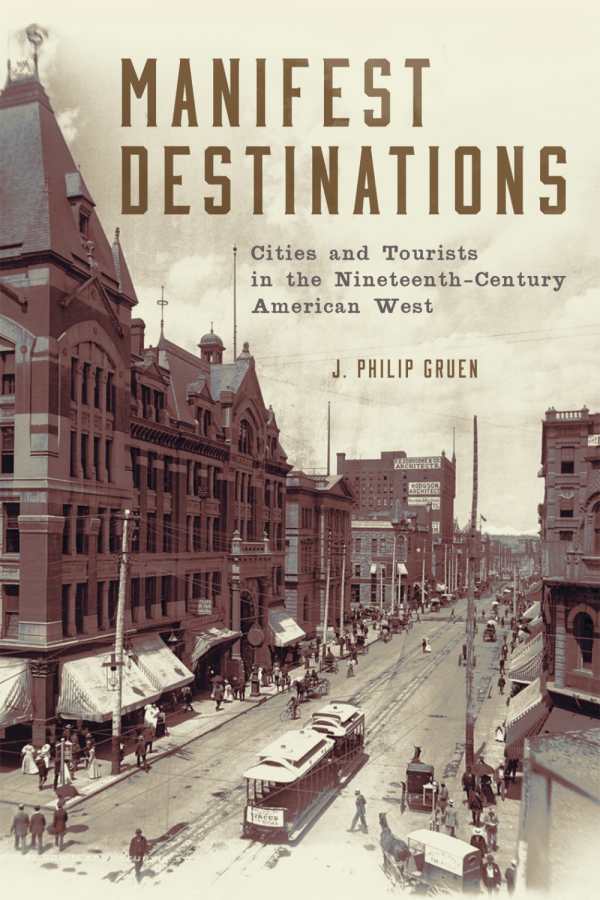Manifest Destinations
Cities and Tourists in the Nineteenth-Century American West
This significant work of social history assesses the experiences of tourists who journeyed through the American West in the 19th century.
Travel to the American West became much more accessible during 1869-1893 as the Central Pacific and Union Pacific lines connecting New York, Chicago, Denver, Salt Lake City, and San Francisco were completed. Despite the steep cost—tickets from New York to San Francisco cost $139.50—tourism exploded, as brochures, books, magazine articles, and newspaper stories enticed travelers to see the natural and “built” wonders of the once-wild West. J. Philip Gruen, who holds a PhD in architecture from the University of California at Berkeley and teaches at Washington State University, describes in detail that this booster literature mostly failed to live up to its promises.
This scholarly yet engaging account includes many stories about what promotional literature promised and what tourists actually experienced. Gruen taps into a wealth of tourist accounts that don’t sugarcoat travelers’ experiences. Since power brokers cranked out promotional literature, inconveniences like bad weather, “exotic minorities,” and old and new collapsing buildings were often ignored. The author is especially good at sharing stories about tourist encounters with these minorities and the less than pristine conditions of the cities. L. de Cotten, a French tourist, refutes Chicago, the “Garden City,” as “tempered by the squealing of animals and blood.” Apparently, the redolent stockyards were not worth mentioning in booster literature. Cornelia Adair mentions Chicago’s beautifully appointed Palmer House with its ubiquitous spittoons as an alternative for “Western men’s odious habit of spitting on carpets.”
The author also covers the fascinating concept of cosmopolitanism in depth. According to elites who promoted their cities through fluffy booster accounts, cosmopolitans were a diverse population working toward a common goal. Mormons were often regarded as immoral because of their practice of polygamy, and Chinese were portrayed as untrustworthy and unclean, and therefore neither contributed to the cosmopolitan spirit. Tourists, however, arrived at their own conclusions, many of which contradicted elite views, from their own interactions with these minorities.
The author has written a thematic rather than chronological investigation, so repetition does occur. Also, Chicago receives more attention because many more tourists visited this city. However, to Gruen’s credit, he does not slight the other cities. Overall, this is a significant work of social history that assesses booster literature and the biases and prejudices of those who wrote it and how it was challenged by the actual experiences of tourists who journeyed through the American West.
Reviewed by
Karl Helicher
Disclosure: This article is not an endorsement, but a review. The publisher of this book provided free copies of the book to have their book reviewed by a professional reviewer. No fee was paid by the publisher for this review. Foreword Reviews only recommends books that we love. Foreword Magazine, Inc. is disclosing this in accordance with the Federal Trade Commission’s 16 CFR, Part 255.

